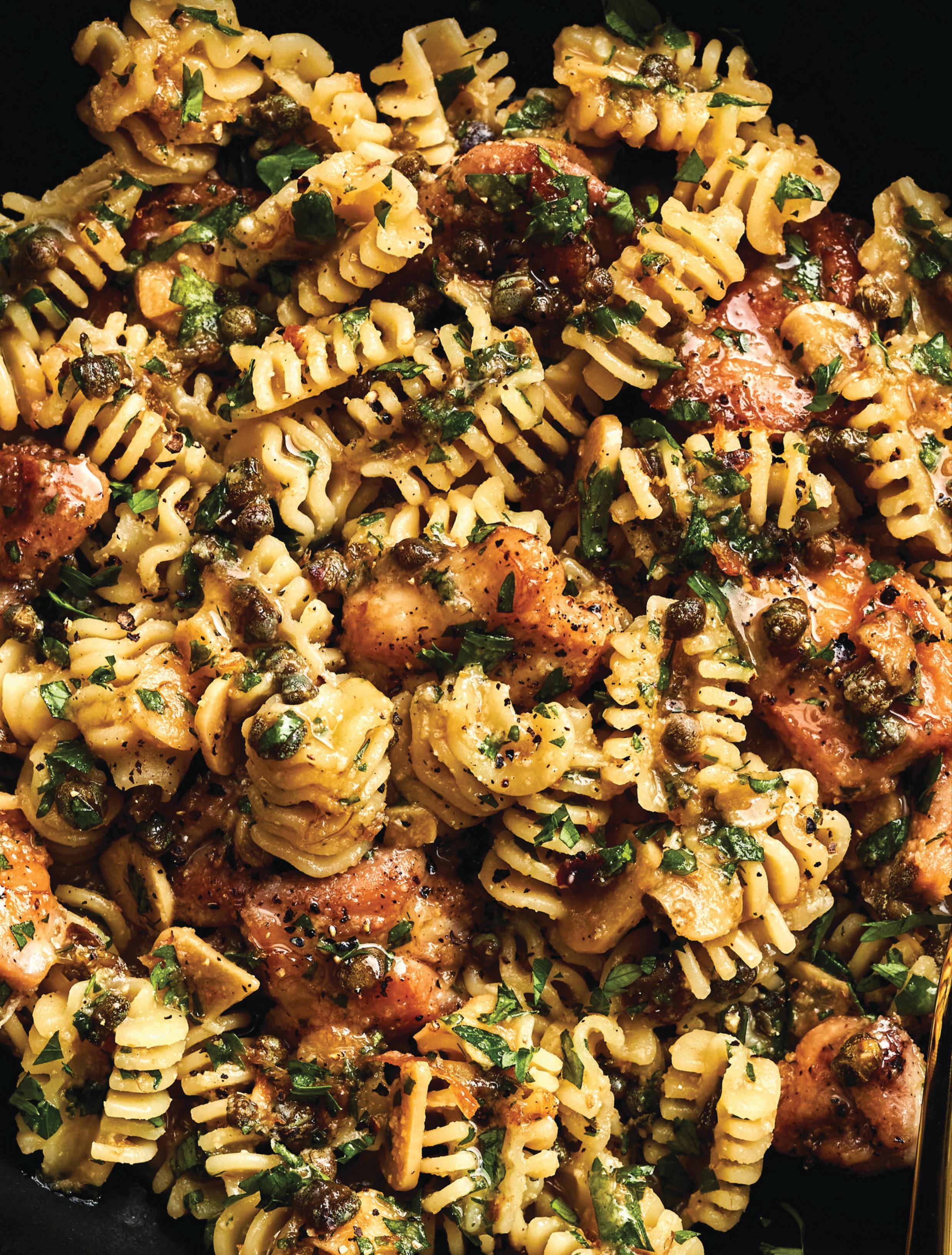
A STROLL DOWN THE PASTA AISLE at your local supermarket presents you with a panoply of forms, textures, and names: tubular penne, corkscrew-shaped cavatappi, ruffled radiatori. They’re so familiar and classic they feel like they’ve always been around, yet most of them owe their existence to technological innovations from the 1800s that have made them commonplace today.
The mechanization of long pastas like spaghetti and vermicelli began in the late 16th century, but up until the 19th century, short pasta shapes were cut and shaped exclusively by hand, traditionally by women. The short pastas we find at the grocery store today only appeared at the end of the 19th century, when new types of dies (the perforated plates through which pasta shapes are extruded) capable of producing intricate shapes were invented. The use of these bronze and nickel dies, resistant to corrosion from the moisture in the dough, resulted in around 150 to 800 redesigned or brand-new pasta shapes, some of which, like penne, have become iconic. Around the same time, the introduction of mechanical indoor drying shortened the drying period for pastas from months (during the Middle Ages) to hours, making the large-scale production of short pastas possible.
Many of the pasta companies that are grocery-store standbys got their start during this explosion in pasta innovation. In 1889, Filippo De Cecco, whose pasta company still bears his name, invented a device improving upon indoor pasta-drying machines. In 1910 in Parma, where bakers were also pasta producers, Riccardo Barilla transitioned his father's bakery into a bread and pasta factory, and within 50 years, he overtook both local and national pasta manufacturers to become the leader in Italian pasta production. Pasta factories proliferated in the United States as well; by the early 20th century, there were over 300, including Ronzoni (established in 1915) and San Giorgio (1914).
This story is from the February 2025 edition of Food & Wine.
Start your 7-day Magzter GOLD free trial to access thousands of curated premium stories, and 9,000+ magazines and newspapers.
Already a subscriber ? Sign In
This story is from the February 2025 edition of Food & Wine.
Start your 7-day Magzter GOLD free trial to access thousands of curated premium stories, and 9,000+ magazines and newspapers.
Already a subscriber? Sign In

FEASTING SEASON
IN LOUISIANA, CARNIVAL IS A SEASON OF CRAWFISH, KING CAKE, AND COMMUNITY.

An Insider's Istanbul
A wave of culinary creativity and innovation in Turkey's largest city nods to the past, even as it's laser-focused on the future.

Sip and Ski
Après-ski cocktails are the best part about hitting the slopes.

Wontons with Hot and Sour Sauce
Martin Yan's satisfying wontons are a win for dumpling newbies and pros alike.

THE F&W GUIDE TO RENOVATING YOUR KITCHEN
HOW TO REINVENT YOUR SPACE WITHOUT LOSING YOUR MARBLES (OR YOUR SHIRT)

Comforting Casseroles
Warm up this winter with these hearty one-pan bakes.

Chocolate Chic
As it bakes, this simple cake creates its own silky chocolate sauce.

BeeBo, Beloved
Cherished by chefs, this vintage pasta-maker excels at cranking out cavatelli.

Sweet Things in Store
Paola Velez pays tribute to the bodega with Bodega Bakes, her debut, dessert-centric cookbook.
